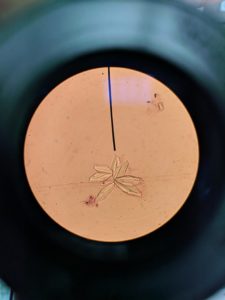Urolithiasis is a condition in which stones or crystals (uroliths) form in the urinary tract. The condition is usually very painful and can be potentially fatal if a complete blockage occurs in the urinary tract.
Causes of Urolithiasis
Several factors can contribute to the development of urolithiasis in pets. These include genetics, urinary tract infections, and metabolic problems. Some breeds of dog are predisposed to the condition, including miniature poodles, Dalmatians, and English bulldogs. Certain breeds of cat such as Persians and Himalayans are also thought to be more susceptible to developing urolithiasis.
Symptoms of Urolithiasis
It is important to visit your veterinarian immediately if your pet displays symptoms of urolithiasis to avoid a partial or complete blockage of the urinary tract. The following symptoms are associated with urolithiasis in pets.
- Frequent urination
- Difficulty urinating
- Blood in the urine
- Painful urination
- Lethargy
- Loss of appetite
- Increased thirst
Diagnosis of Urolithiasis
Your veterinarian will ask you a series of questions about the onset of your pet’s symptoms. They will then perform a thorough physical examination to check for clinical signs of urolithiasis. During the physical examination, your veterinarian will use their hands to check for abnormalities in your pet’s abdominal area. This is known as abdominal palpation.
Other diagnostic tests will be performed to assess your pet’s overall condition and rule out other causes of their symptoms. Typically, these will include a urinalysis, bloodwork, and a urine culture. Imaging techniques such as X-rays and ultrasounds may also be used to examine the urinary tract in more detail.
Treatment of Urolithiasis
Treatment of urolithiasis will depend on the severity of your pet’s symptoms. If the urinary tract is unobstructed, specialized diets and medications are often prescribed to dissolve stones and crystals.
In the majority of cases, surgery will be required if there is a blockage in the urinary tract. The most common surgical procedure to remove uroliths is known as a cystotomy. During the procedure, your veterinarian will create an incision in your pet’s abdomen and bladder to remove stones from the urinary tract.
Following surgery, your veterinarian will prescribe analgesics to relieve pain. Antibiotics may also be necessary to treat secondary urinary tract infections.
Prevention of Urolithiasis
If your pet is susceptible to urolithiasis, ask your veterinarian for advice on preventing stone formation with dietary management. It is also important to provide plenty of fresh water to flush out the urinary tract and schedule regular appointments with your veterinarian to monitor your pet’s health.



